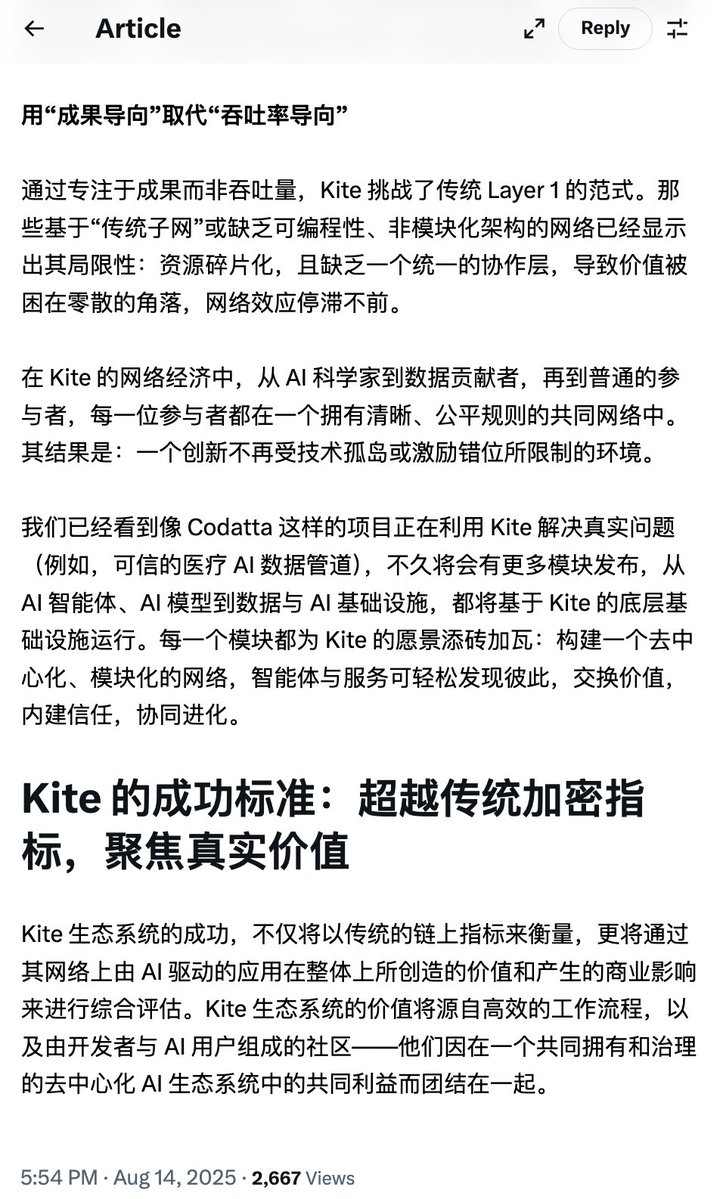The weekend just started, and I began watching "China's New Rap"; "blood transfusion" is this year's buzzword.
From large institutions rushing in, RWA gradually scaling up, to compliance legislation tightening, it is not hard to see that the Crypto industry is being "forcibly" pushed towards the mainstream, and it’s time for a change.
Our recent case analysis from @codatta_io aligns with @jason_chen998's viewpoint: only public chains and middleware that can solidly integrate infrastructure with user experience and address real-world business needs are likely to become the winners of this cycle, rather than just creating a bunch of "industrial waste" metrics.
For public chains that need to build ecosystems and platforms, technology may only be the most basic threshold, especially against the backdrop of AI gradually revolutionizing all industries. What is needed more is the reliability of interaction with real-world data and assets, the degree of integration with actual workflows, compliance, and the rationality of economic models.
This is also the direction that @GoKiteAI has been striving for: proving the moat in the real demands of the AI industry and sustainable cash flow.

For public chains, focusing solely on TPS is a very lazy approach, much like how, ten years ago, a bunch of smartphone manufacturers held press conferences bragging about their benchmark scores surpassing Apple's, or how in recent years, many car manufacturers have held press conferences boasting about their range exceeding that of Tesla. However, most of those once high-scoring flagship phones and long-range newcomers have ultimately become industrial waste, discarded in the annals of history. In engineering, technical metrics are the easiest to quantify and achieve. If a manufacturer constantly brags about its technical metrics, it certainly indicates insecurity and incompetence in its real commercial competitive ability. The true competitive edge that stands out is often unquantifiable and even directionally uncertain, requiring more bottomless investment compared to achieving visible technical metrics.
You can think of these industrial wastes that have become self-satisfied due to achieving certain technical metrics as small-town test-takers who haven't yet gone to college and have not been beaten down by society (no offense intended). They genuinely believe that memorizing vocabulary and solving equations quickly will lead them to become CEOs and marry beautiful, wealthy partners, thus becoming winners in life.
This is also the reason why there are many distorted "king-level" projects in the Ethereum ecosystem and the entire Infra field, driven by VC. Big money only flows toward certain directions, leading to a plethora of performance-oriented projects like Starknet and Scroll attracting a swarm of VCs. After all, when VCs report to LPs on why they invested in these industrial wastes, they can provide a seemingly comprehensive and persuasive report, thus creating a vicious cycle of continuously producing industrial waste.
15.03K
21
The content on this page is provided by third parties. Unless otherwise stated, OKX is not the author of the cited article(s) and does not claim any copyright in the materials. The content is provided for informational purposes only and does not represent the views of OKX. It is not intended to be an endorsement of any kind and should not be considered investment advice or a solicitation to buy or sell digital assets. To the extent generative AI is utilized to provide summaries or other information, such AI generated content may be inaccurate or inconsistent. Please read the linked article for more details and information. OKX is not responsible for content hosted on third party sites. Digital asset holdings, including stablecoins and NFTs, involve a high degree of risk and can fluctuate greatly. You should carefully consider whether trading or holding digital assets is suitable for you in light of your financial condition.


